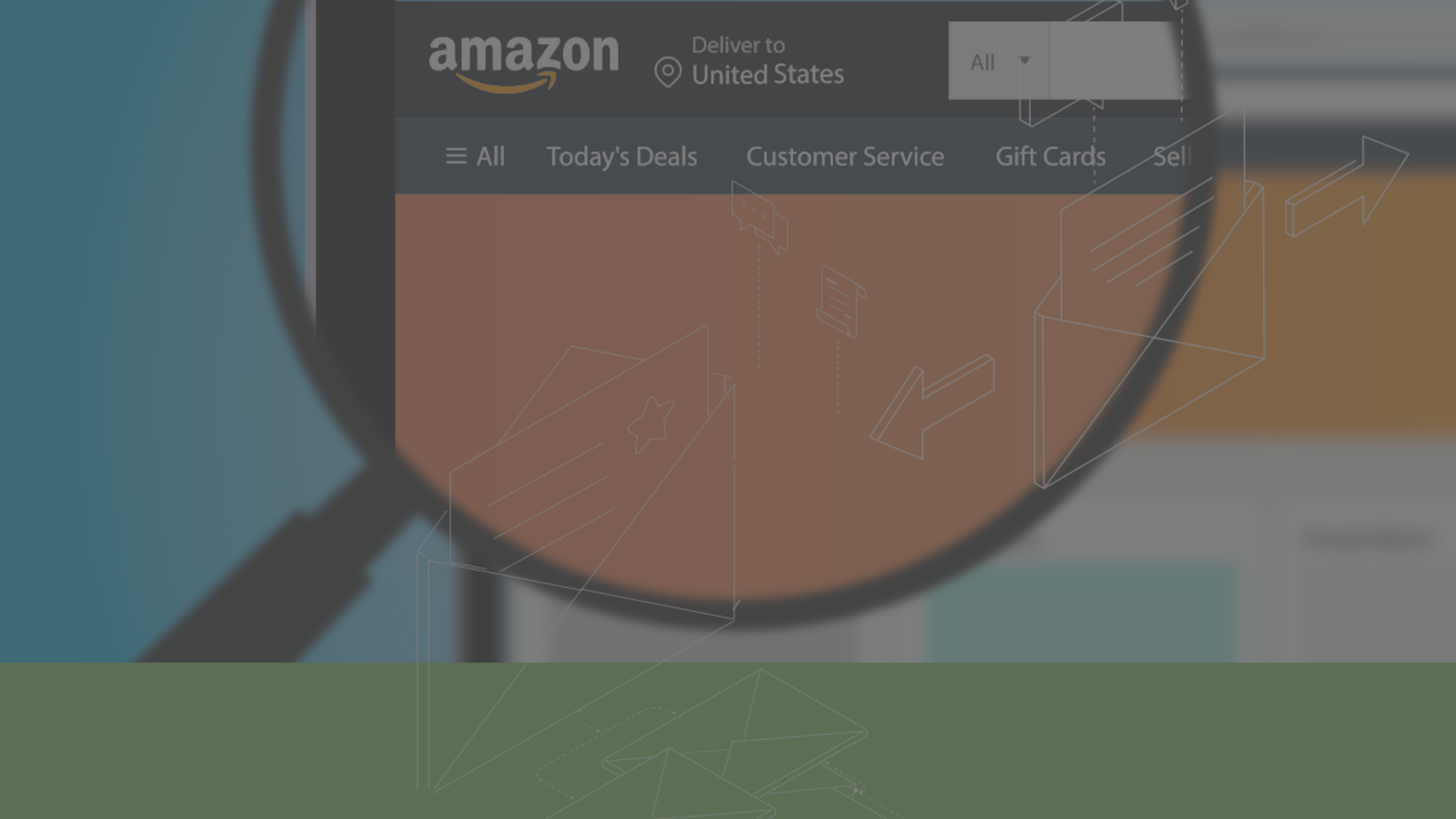How to Improve Your Email Marketing Game? Learn from Amazon
You may think that the rise in the use of social media platforms signals the inevitable decline of email marketing as an effective way to get new and attract repeat customers and drive conversions. You’d be mistaken. In fact, according to this study by McKinsey & Co., email marketing is nearly 40 times more effective at acquiring new customers than social media.
Not only can email marketing help expand your customer base, but it has the highest ROI of all marketing channels. So, what does an effective email marketing campaign look like? This article uses the sterling example set by Amazon to show you exactly how to put together your successful email marketing strategy.
What are the benefits of email marketing?
Better brand awareness
Regular email updates give your audience a first-hand experience of your brand. It’s a great opportunity to create a unique style, voice, and image for your subscribers.
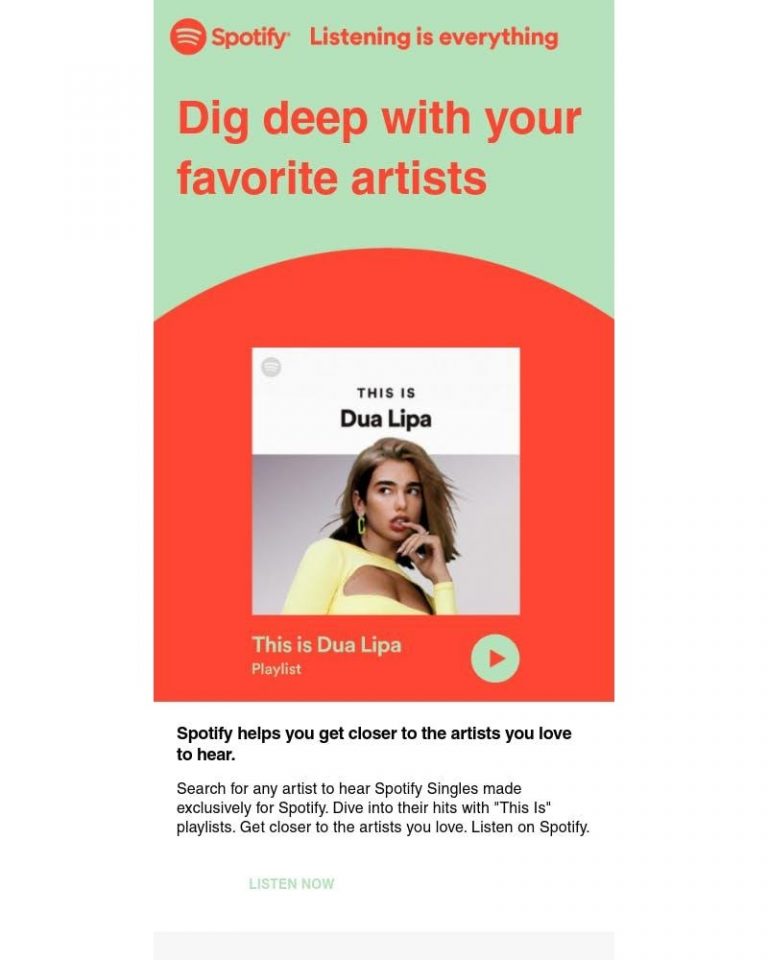
See for instance Spotify’s email marketing strategy as they regularly update their subscribers with relevant and valuable information (e.g. new song or album from favourite artists) that drives them back to the Spotify platform.
Build personalised engagement
Segmentation is the key to highly personalised content. You can segment your email contact lists into different subsections based on almost any of your audience’s characteristics. Curate a message for each subsection to ensure your emails are always engaging and targeted.
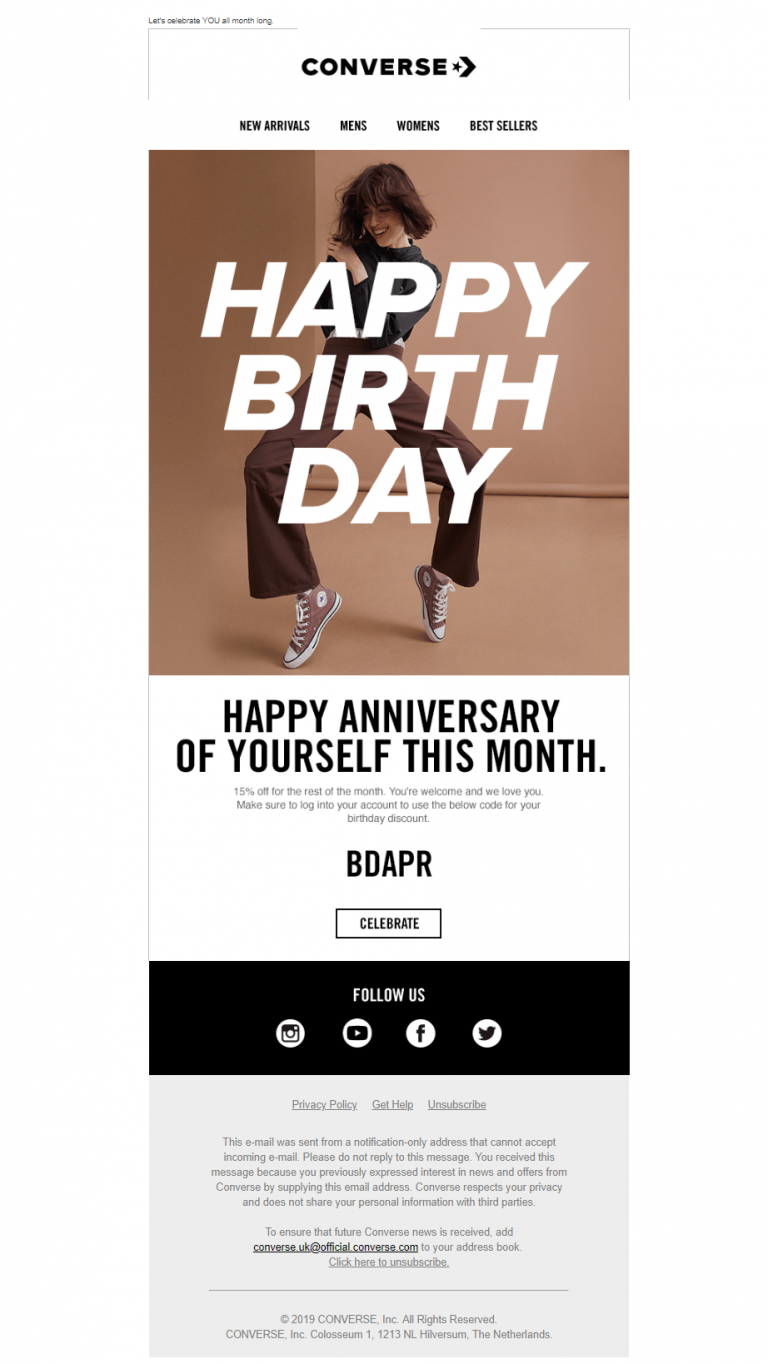
Take birthday congratulations, for example. Sending emails to your subscribers on their birthday can take personalisation to the next level. Birthday congratulation emails receive far 481% higher transaction rates and 342% more revenue than regular promotional emails. This email from Converse shows an example of how such an email could look. For more information on how to make birthday emails work for you, please follow this link.
Reach an already engaged audience
Your email list should be built upon customers who’ve subscribed to receive email communications from you. Therefore, they’re likely to be engaged and interested in what you have to say.
Of course, you can buy email lists, but we don’t recommend that at all – you risk damaging your reputation, wasting marketing effort and not to mention it might even be illegal. Follow this link for more information.
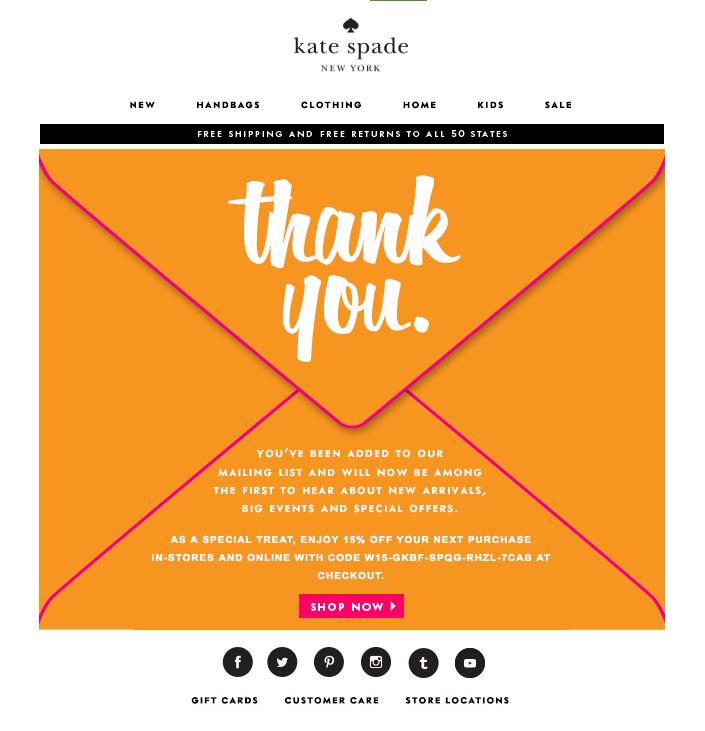
Take a look at this welcome email from Kate Spade. Notice that the subscriber asked to be added to their mailing list. This is a wonderful beginning to sending solicited marketing emails.
Efficient use of budget
Printed marketing material is expensive. This article by WebFX notes printed marketing mediums can cost anywhere from $50 USD to $250,000 USD and not all forms of printed marketing have direct ROI tracking.
Despite the fact that you’ll have to factor in some form of automating, tracking and evaluating emails, these overheads are far more worthwhile considering that email marketing has one of the highest ROIs on record (Campaign Monitor suggests it could be as high as 4400%).
Increase website traffic
Emails are a great avenue to lead your customers to your website with relevant website links. They’re also a great tool for encouraging your customers to promote your content on social media with social sharing links.

This email from Ikea is a good example; see how they integrated their email with call-to-action buttons going to their website blog and encouraging their audience to do social media shares.
Drive more revenue
According to the DMA’s Marketing Email Tracker Report 2019, for every $1 spent on email marketing, an average return of $42 can be expected. One major reason for this is the ability to direct your customers down the sales funnels straight from your emails. Personalisation is also a key – emails can be personalised for almost any subcategory of your customers, encouraging them to spend more by advertising services and products specifically for them.
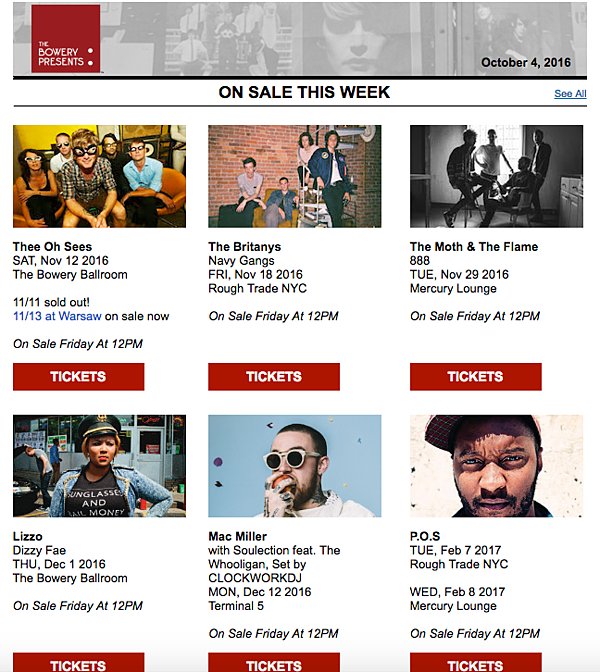
This email from The Bowery Presents lowers the barrier between the customer and the purchase funnel by putting up clear next actions by each show.
Amazon Email Marketing Case Study: How Do They Do It?
Now that we’ve covered the benefits of an email marketing campaign, let’s focus on the email marketing strategies of one of the world’s biggest multinational marketplaces: Amazon.

Amazon’s journey from a garage in 1994 to reaching a $1 trillion USD market valuation in 2018 is a combination of many factors – an effective email marketing strategy being one of them. So, how exactly has Amazon championed email marketing?
Making emails an extension of their website
Simple and impactful, Amazon’s approach to email marketing is ensuring their emails look just like their website. This email-to-website-user flow helps drive conversions and makes shopping online easy.
For instance, there’s the ever-present, clear call-to-action button in emails as can be found on the Amazon website. This consistency across platforms leads to familiarity which, in turn, builds awareness and trust.
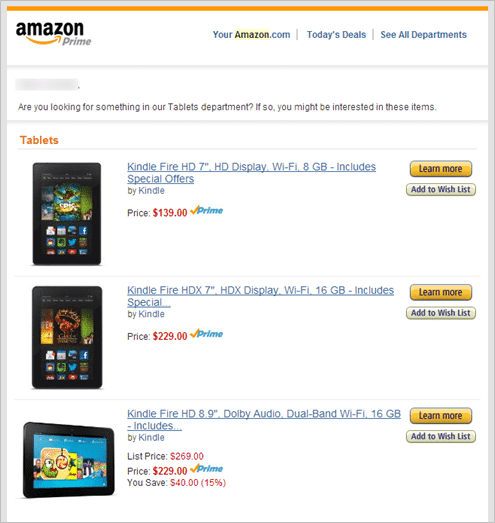
Email recipients can easily add items to their Amazon Wish List straight from emails, further adding to convenience and increasing Amazon’s conversion rate.
Harnessing the familiarity principle
Studies have shown that we’re naturally attracted to what’s familiar to us, and that repeated exposure increases our attraction to something.
Amazon has fully adopted this approach, by building a well-optimised, targeted email marketing strategy with follow-up sequence.
Have you ever received an email from Amazon after you searched for something on their website but didn’t end up buying anything? That’s them harnessing the familiarity principle.
Not only is Amazon using this approach to drive conversions, but it’s also showing you, the customer, that they’re there to serve. By nurturing their email subscribers in this way, they’re ensuring loyalty and repeat visits.
Below, you’ll find an example of an Amazon follow-up email sequence from a case study done by Kwasi alumni. After spending a couple of minutes browsing cameras, Amazon established the website user’s intent and began their follow-up email sequence.
Email 1
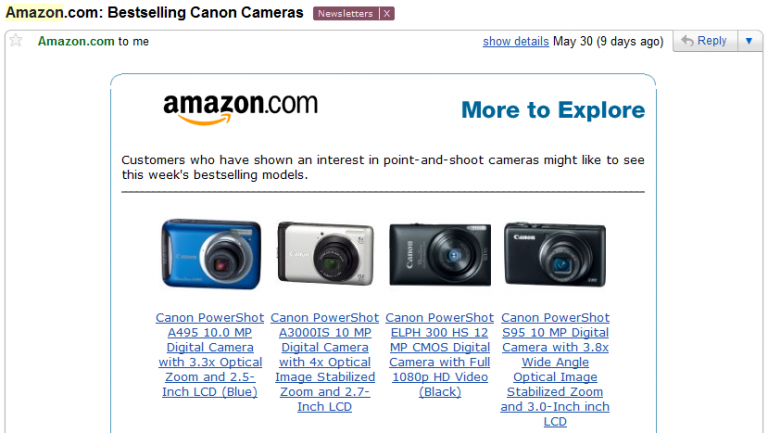
A casual email telling what cameras (all Canon) others have been looking at that week, with short descriptions, images, and links
Email 2
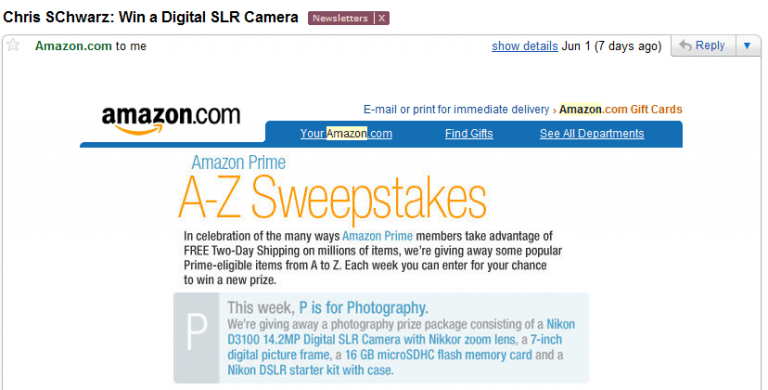
Sent: Within 24 hours of the initial search
Amazon tracked that the first email was opened. Within 24 hours from the first email, a second email was sent offering the chance to win a digital SLR camera with accessories. By suggesting a higher spec camera and added items, Amazon plants the seed that maybe the prospect might like something more than a Canon camera.
Email 3
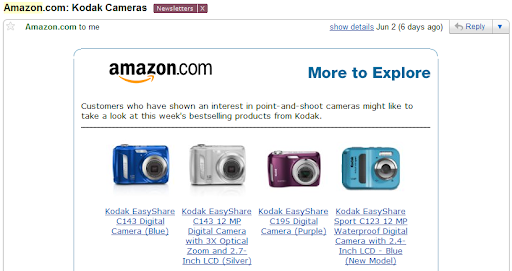
Sent: 3 days after the initial search
This email has the same format as the first, only now it’s marketing Kodak cameras.
Email 4
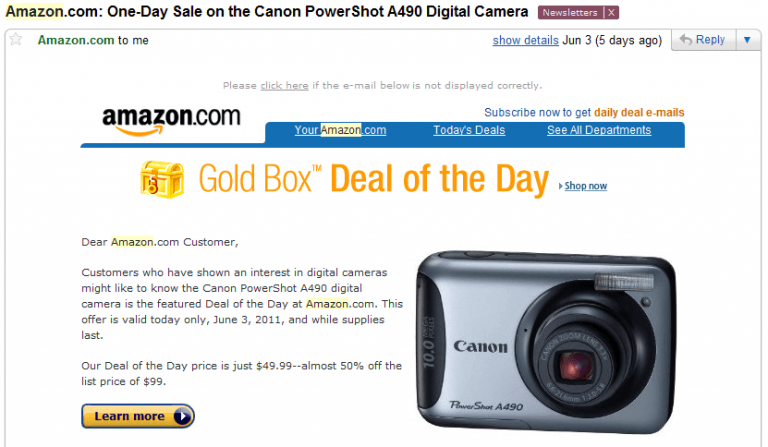
Sent: 4 days after the initial search
This email offers a special deal of the day with almost 50% off the listed Amazon price of a Canon camera.
Email 5
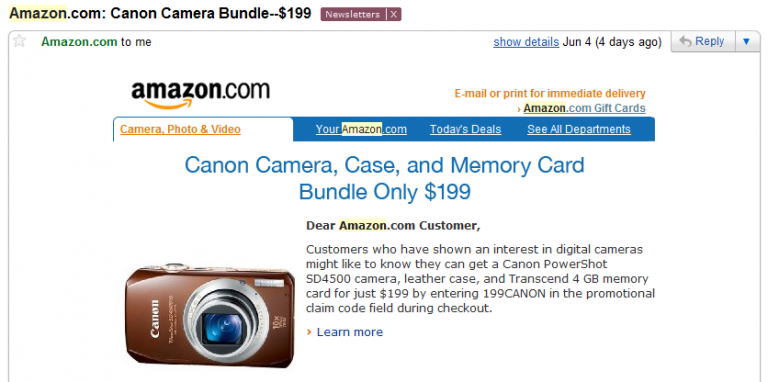
Sent: 5 days after the initial search
Here, Amazon offers a full product package complete with a Canon camera case and memory card for a bundle price. Similar to the email sent 3 days ago, this suggests the prospect may wish to buy a camera and accessories but removes the suggestion of a higher spec camera as seen in Email 2.
Email 6
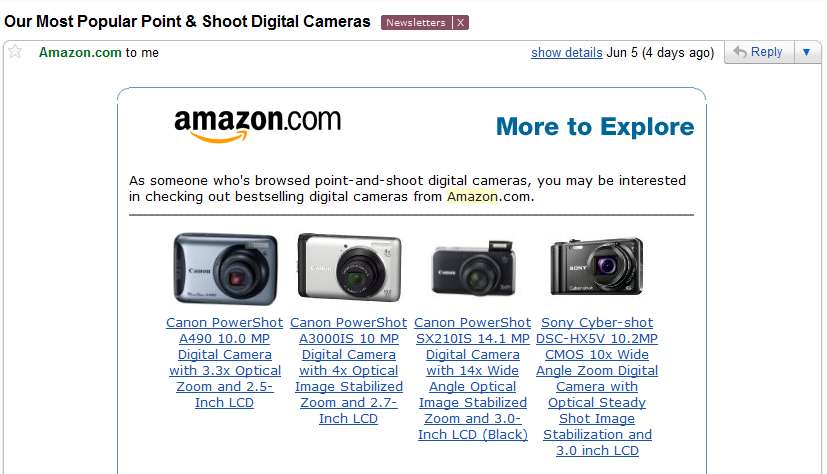
Sent: 6 days after the initial search
Similar to Email 1 and Email 3, Email 6 again suggests similar items to the prospect’s initial search. This time, however, there’s no specific brand suggestion.
Email 7
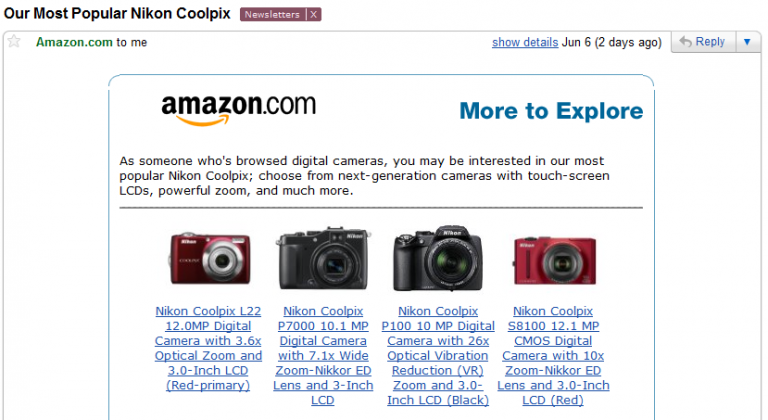
Sent: 1 week after the initial search
A most popular suggestion. With a consistent approach, Amazon hopes to convert its marketing efforts into sales.
Email 8
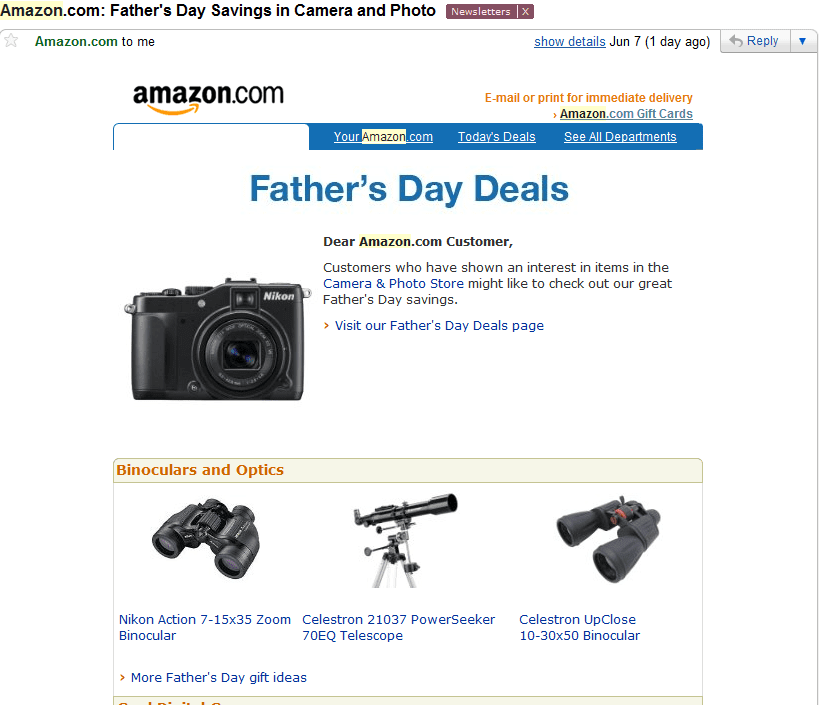
Sent: 1 week & 1 day after the initial search
Another way to convince a prospective customer to make a purchase following a product search can be to coincide marketing emails with holidays. This email assumes the prospect is searching for Father’s Day gifts and suggests similar items to a camera.
In this email, Amazon reminds the prospect of their recent camera search whilst also using the opportunity to suggest similar products.
Email 9
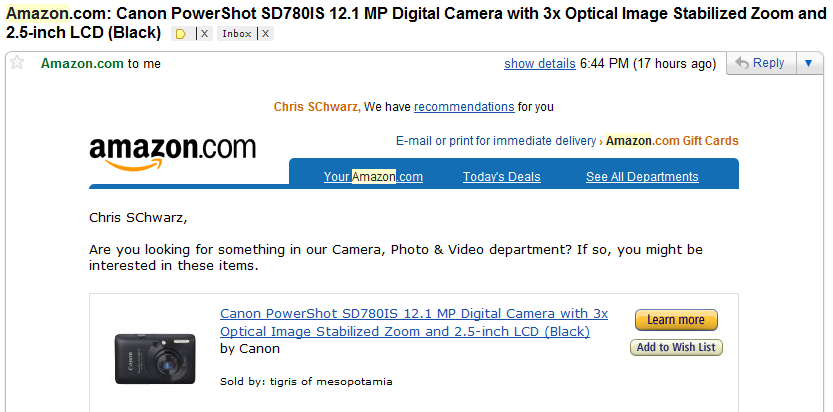
Sent: 1 week & 2 days after the initial search
The title is now very specific with the product name and specifications.
With this sequence of repetitive trigger actions, a prospect was consistently encouraged to make a purchase. By using personalised recommendations, offering deals and suggesting higher-spec items, Amazon utilises its extensive product range and customer behaviour and preference knowledge to close a sale.
Super-personalised segmented emails
Super-personalised and segmented emails are the building blocks of Amazon’s success at email marketing. From past order data to location, Amazon tracks every detail of your conversion funnel and uses this data to achieve effective personalisation and recommendations for you.
Below is an example of how Amazon uses past purchase data in a promotional email. In this hyper-personalised email, Amazon encourages the prospect to make another purchase and simultaneously anticipates what this future purchase might be.
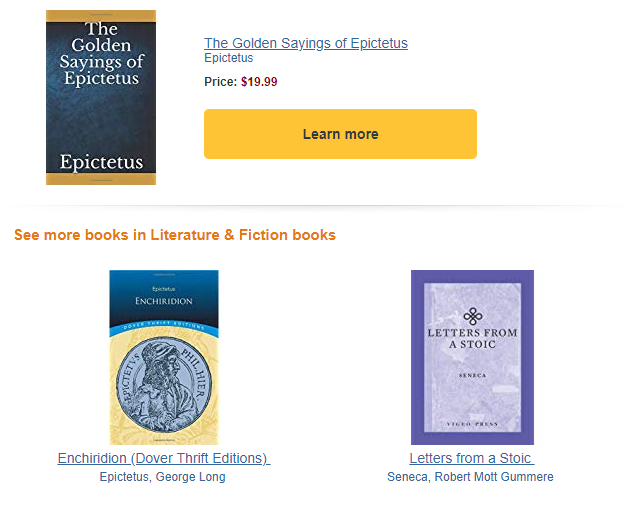
Less is more
According to the Statistic Brain Research Institute, the average adult has an attention span of 8 seconds. What this means for email marketing is: less is more.
Amazon has certainly championed the short-and-sweet approach, as seen in the below email example. The obvious call-to-action button dominates the eye, and the accompanying text is short and concise.
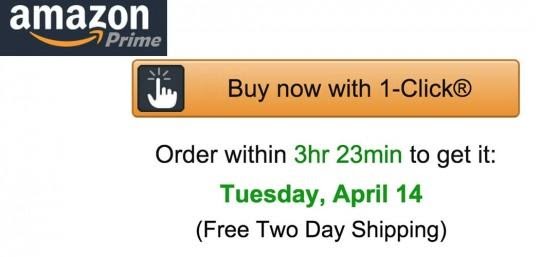
To Recap
A successful email marketing strategy has the following things:
- A consistent look and an uninterrupted user flow from email to your website
- An email follow-up sequence based on the Familiarity Principle
- Personalised segmented email lists based on your customers’ actions on your website
- Concise, visually strong content with a clear call-to-action
How can I apply this to my business?
You’re committed to improving your email marketing and you’ve read our article on how useful email marketing can be. But, how exactly do you go about revamping your email marketing?
Audit your email marketing strategy
The first step to making any changes to your email marketing strategy is to conduct a full audit of what you’re currently doing. This gives you the full picture of the email marketing channel and how you’re using it to drive conversions. It might even help you to draw a flowchart from email to customer so you can easily see the customer’s journey from email to conversion and any problems along the way.
Segment and personalise
You’ve audited your current marketing strategy and now you’re ready to make some improvements. One of the most important improvements you can make is to segment your email list and make email personalisation part of your email marketing strategy. Use Amazon’s example of super-personalisation to inspire changes you make. Remember to include this same personalisation in any follow-up emails as well.
Add value
Part of what will keep customers returning to your business is the promise of added value. Whether your emails contain information, sales promotions or webinar invites, they should be of value to your customers. Segmentation of your email list will help you decide what is of value to which customer, but email open metrics (among other metrics) can help confirm this.
Conclusion
Email marketing has the highest ROI of all marketing methods. By following the example of the online marketplace giant Amazon, we can all make our email marketing campaigns work that much better for us and for our audience.
